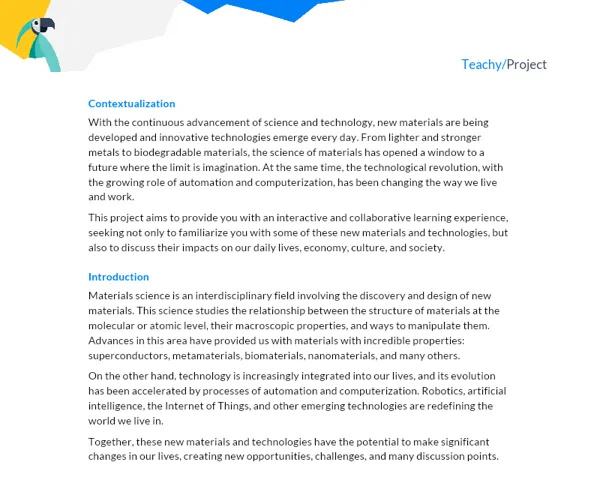Context
Introduction to the Project - Unveiling our Planet Earth
Hello, little scientists! We have an incredible journey to embark on together, which is to explore our own planet. Have you ever stopped to think about how Earth is formed and what it has inside and outside of it? Earth is a planet full of wonders and is our home within the vast universe. It is not just a bunch of rocks, water, and air. Our Earth has layers that make it very special and unique, and we are going to understand more about it.
Our Earth is divided into parts called layers, just like a layered cake! They are: Earth's Crust (the part where we live, with mountains, valleys, and oceans), Mantle (a layer of very hot rocks, almost like a thick stone soup), and the Core (the center, which is very hot and has metals like iron). And besides that, our planet also has external divisions such as the Lithosphere (solid part), Hydrosphere (water part), Biosphere (where plants, animals, and we live), and Atmosphere (the layer of air that surrounds the Earth).
Are we ready for our adventure to discover more about our planet? Let's go!
Contextualization and Relevance of the Project
Our planet is like a big house that hosts a variety of unique life. Understanding the structure of the Earth is essential for us to understand how we can take better care of it and ourselves. After all, we cannot take care of something we do not know, right?
Did you know that many professions and daily activities are linked to knowledge about the Earth? Geologists, for example, are people who study rocks and soil to understand Earth's past events. Meteorologists need to understand about the atmosphere to predict the weather. Even when we are thinking about protecting the environment, we need to understand how the Earth works.
In this project, we will become little researchers to understand more about our Earth and how to take care of it, as well as develop important skills such as teamwork, research, creativity, and time management. Let's go, scientists!
Practical Activity
Activity Title: "The Journey of Earth's Layers"
Project Objective
The objective of this activity is to know and understand the different layers of the Earth and their characteristics, exploring and applying concepts of Science and Art in a practical and fun way.
Detailed Project Description
In this activity, students will build a three-dimensional model of the Earth using recyclable materials. This model will be divided into sections to represent the different layers of the Earth. Each group will be responsible for researching and including characteristics and curiosities about each layer in the model presentation.
Required Materials
- Two styrofoam balls of different sizes or old balls (one to represent the core and the other the mantle and the Earth's crust).
- Colored paper or different colored paints (for each layer).
- Pencils, erasers, rulers, adhesive tape.
- Science books or internet access for research.
- Sheet of paper to describe the layers.
- Glue, scissors, and toothpicks.
Detailed Step-by-Step for Activity Execution
-
Divide the class into groups of 3 to 5 students. Each group will be responsible for building a three-dimensional model of the Earth.
-
Explain that the model will be divided into sections representing the layers of the Earth: Earth's Crust, Mantle, and Core. Additionally, they will represent the external divisions: Lithosphere, Hydrosphere, Biosphere, and Atmosphere.
-
Provide each group with the necessary materials for building the model.
-
Let the students paint or cover the two balls (one smaller and one larger) to represent the layers of the Earth. They should use different colors for each layer.
-
Then, ask the students to cut the larger ball in half (with adult supervision if necessary) so they can place the smaller ball inside, representing the Earth's core.
-
Each group should research the characteristics of the Earth's layers and write them on a sheet of paper. The descriptions should be attached to the three-dimensional model with the help of toothpicks.
-
After completing the assembly, the groups should present their project to the class, explaining the characteristics of each layer and sharing curiosities about them.
-
The project should be physically delivered, and the groups' presentations will be made in the classroom for all classmates.
This project "The Journey of Earth's Layers" will be a challenge full of learning and also a lot of fun! Remember, little scientists, our greatest adventure is to discover more about the world we live in!

